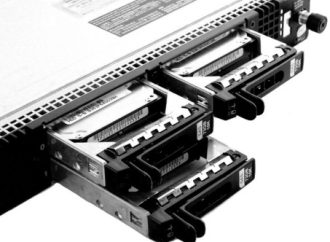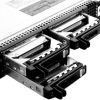Introduction The way we travel by train is changing fast. Traditional railways are being replaced by smarter, safer, and more connected systems. These modern technologies are part of what’s known as “smart railways.” As cities grow and transportation needs increase, smart railways play a big role in helping people move quickly and safely. In this
Introduction
The way we travel by train is changing fast. Traditional railways are being replaced by smarter, safer, and more connected systems. These modern technologies are part of what’s known as “smart railways.” As cities grow and transportation needs increase, smart railways play a big role in helping people move quickly and safely. In this article, we’ll explore the global smart railways market size, share, industry insights, and the key trends shaping its future.
What Are Smart Railways?
Smart railways use advanced technologies like the Internet of Things (IoT), artificial intelligence, GPS, sensors, and big data to improve how trains run and how passengers travel. They offer real-time tracking, automatic ticketing, better safety, and improved energy efficiency.
Smart railways are not just about trains. They include everything from the tracks and stations to the signals and control systems. The goal is to make railway transportation smoother, safer, and more eco-friendly.
Market Size and Growth Overview
The global smart railways market has been growing fast and is expected to continue expanding in the coming years. As of 2025, the market size is projected to reach several billion dollars, with a steady growth rate year over year. This growth is driven by the rising need for smart city infrastructure, more public transport demand, and increased investments in rail technology.
North America and Europe are currently the largest markets due to advanced technology and infrastructure. However, the Asia-Pacific region is catching up quickly, especially countries like China and India, which are investing heavily in modernizing their rail networks.
Key Drivers of Market Growth
- Urbanization and Population Growth
As cities become more crowded, smart railways offer a reliable way to reduce traffic and pollution. - Government Investments
Many countries are funding railway upgrades to boost their transportation systems and support smart cities. - Rising Demand for Safe and Efficient Travel
People want safer, faster, and more comfortable travel options, and smart railways meet these needs. - Technological Advancements
New tools like AI, machine learning, and IoT are helping trains run on time, use less energy, and avoid accidents. - Environmental Concerns
Smart railways use less fuel and produce fewer emissions, making them a cleaner choice for the planet.
Major Components of Smart Railways
The smart railway system includes several important components:
- Smart Ticketing Systems
These allow passengers to book, pay, and enter trains without paper tickets. - Rail Analytics
Data from trains, tracks, and stations is collected and analyzed to improve performance. - Communication Systems
Real-time updates on train schedules and safety alerts keep passengers informed and safe. - Smart Infrastructure
Tracks, signals, and stations are equipped with sensors and monitoring systems to prevent breakdowns. - Passenger Information Systems
Displays and announcements provide updates to passengers in real time.
Market Segmentation
The smart railways market is divided into different segments:
- By Solution Type: Smart ticketing, rail analytics, traffic management, passenger information, and others.
- By Component: Software, hardware, and services.
- By Region: North America, Europe, Asia-Pacific, Latin America, and the Middle East & Africa.
Each segment contributes differently to the growth of the market, based on technology adoption, government policies, and regional needs.
Key Trends in the Industry
- AI and Machine Learning Integration
Trains are becoming smarter with AI, helping with route optimization and real-time problem-solving. - Predictive Maintenance
Using sensors and analytics, rail systems can detect issues before they cause delays or accidents. - Digital Twins
Rail networks are creating virtual models (digital twins) of their systems to test changes before applying them in real life. - Blockchain in Railways
Some systems are using blockchain for secure ticketing and freight tracking. - 5G Connectivity
Faster and more stable connections make it easier to manage data and improve passenger experiences.
Challenges in the Smart Railways Market
Despite the fast growth, some challenges still exist:
- High Costs:
Building and upgrading smart systems require a lot of money. - Integration with Old Systems:
Many countries still use traditional railway systems that are hard to combine with new technologies. - Data Privacy and Security:
With so much digital data, there is a risk of cyber-attacks and data leaks. - Lack of Skilled Workforce:
Operating and maintaining smart railways requires trained staff, which may not be available in all regions.
Major Players in the Market
Several companies are leading the smart railways movement:
- Siemens AG – Offers complete railway automation and smart systems.
- Hitachi Rail – Known for advanced control and signaling systems.
- Alstom – Provides smart mobility solutions including smart trains and digital services.
- Bombardier – Specializes in rail technology and intelligent transport systems.
- Cisco Systems – Delivers communication networks for smart rail operations.
- Huawei – Helps develop ICT infrastructure and smart station solutions.
These companies continue to invest in research and development to keep up with changing technologies and market needs.
Smart Railways vs. Traditional Railways (Comparison Table)
| Feature | Traditional Railways | Smart Railways |
|---|---|---|
| Ticketing | Manual | Digital/Contactless |
| Monitoring | Periodic | Real-time with Sensors |
| Passenger Info | Limited | Real-time Displays/Apps |
| Maintenance | Reactive | Predictive |
| Safety | Basic | Advanced AI-Based Alerts |
| Energy Efficiency | Moderate | High |
Future Outlook
The smart railways market has a bright future. More countries are adopting these technologies to support growing populations and reduce environmental harm. By 2030, smart railways could become the standard mode of rail transport in most developed and developing countries. With the continued rise of urbanization and global efforts to go green, the demand for smart railway systems will only increase.
Innovations in cloud computing, big data, edge devices, and AI will make these systems even smarter. Governments and businesses are expected to collaborate more closely to ensure successful implementation and ongoing upgrades.
Conclusion
Smart railways are transforming the way we travel. They make trains faster, safer, and more efficient by using modern technology. The global smart railways market is growing rapidly due to urbanization, environmental concerns, and technological progress. From smart ticketing to AI-powered traffic control, the future of rail travel looks bright.
Companies and governments investing in smart railway solutions today will help shape a more connected, eco-friendly, and passenger-focused future. Understanding the trends, challenges, and key players can help stakeholders make smart choices in this fast-evolving industry.






















